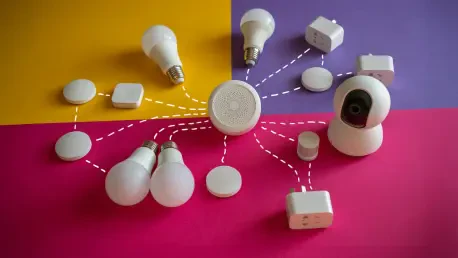In a world increasingly reliant on interconnected systems, the challenge of maintaining seamless connectivity across vast and varied landscapes has become a critical barrier for industries like logistics, agriculture, and energy. Imagine a fleet of trucks transporting vital goods across remote deserts, or sensors monitoring crop health in areas far beyond the reach of cellular towers—disruptions in connectivity can mean lost data, delayed decisions, and significant financial setbacks. Addressing this persistent issue, Semtech Corporation, a leader in high-performance semiconductors and IoT solutions, has partnered with Skylo, a pioneer in direct-to-device satellite connectivity, to introduce a groundbreaking innovation. This collaboration marks a significant milestone in the IoT landscape by offering a unified device-to-cloud solution that bridges terrestrial and satellite networks, ensuring uninterrupted coverage no matter the location.
Breaking New Ground in IoT Connectivity
Transforming Global Coverage Challenges
The partnership between Semtech and Skylo tackles one of the most pressing issues in IoT deployments: connectivity gaps in remote and mobile environments. Traditional cellular networks often fail beyond urban centers, leaving industries such as asset tracking and remote utility management struggling with inconsistent data transmission. Satellite solutions, while available, have historically been costly and complex, often requiring multiple vendors and fragmented systems. This new offering integrates Skylo-certified HL7810 and HL7812 Low Power Wide Area (LPWA) modules with Semtech’s Smart Connectivity Premium SIM, providing access to over 600 4G LTE and 5G networks across 190 countries, alongside satellite coverage spanning 36 countries and 60 million square kilometers. By enabling automatic switching between terrestrial and satellite networks, the solution ensures continuous operation, fundamentally changing how businesses approach global IoT applications with a streamlined, single-vendor system.
Simplifying Deployment with Unified Technology
Beyond addressing coverage, this innovative solution significantly reduces the operational complexity that has long hindered IoT adoption on a global scale. Managing multiple contracts, certifications, and platforms often burdens enterprises with high costs and logistical challenges. With this collaboration, a single SIM and contract structure simplifies the process, drastically lowering the total cost of ownership. The HL7810 module supports LTE-M, NB-IoT, and Non-Terrestrial Network (NTN) connections, while the HL7812 adds 2G fallback for enhanced reliability. Supported by Skylo’s partnerships with major satellite operators, the system offers robust global reach. This unified approach not only minimizes technical hurdles but also allows businesses to focus on their core objectives, rather than wrestling with the intricacies of connectivity management across diverse and often isolated regions.
Shaping the Future of IoT Ecosystems
Driving Efficiency through Integrated Management
A standout feature of this device-to-cloud solution lies in its ability to streamline oversight through the AirVantage management platform, a single interface that transforms how businesses handle their IoT ecosystems. This platform enables centralized management of devices, SIMs, and billing, eliminating the need to navigate multiple systems or vendors for support. Predictable monthly fees further enhance cost transparency, making financial planning more straightforward for enterprises scaling their operations. By reducing operational overhead, the platform empowers industries like transportation and maritime to maintain real-time visibility over assets, even in the most remote areas. This level of integration represents a significant leap forward, aligning with the growing demand for simplicity and reliability as IoT-NTN connections are projected to rise by over 25% annually through 2030, reflecting a clear market shift toward accessible global connectivity.
Pioneering Real-World Impact and Accessibility
The real-world implications of this partnership were evident from the moment it was announced, with a clear commitment to practical implementation and broad accessibility for qualifying customers. Testing opportunities opened promptly, allowing businesses to experience firsthand the benefits of seamless network switching and unified management. General availability, planned for later this year, underscored the dedication to delivering a solution that meets immediate industry needs. Leaders from both companies emphasized the transformative potential, noting that integrating satellite networks into a cohesive IoT platform marks a turning point for industries reliant on continuous data flow. This collaboration not only addresses existing pain points but also sets a new standard for what global connectivity can achieve, ensuring that even the most isolated operations can remain connected and competitive in an increasingly digital landscape.









